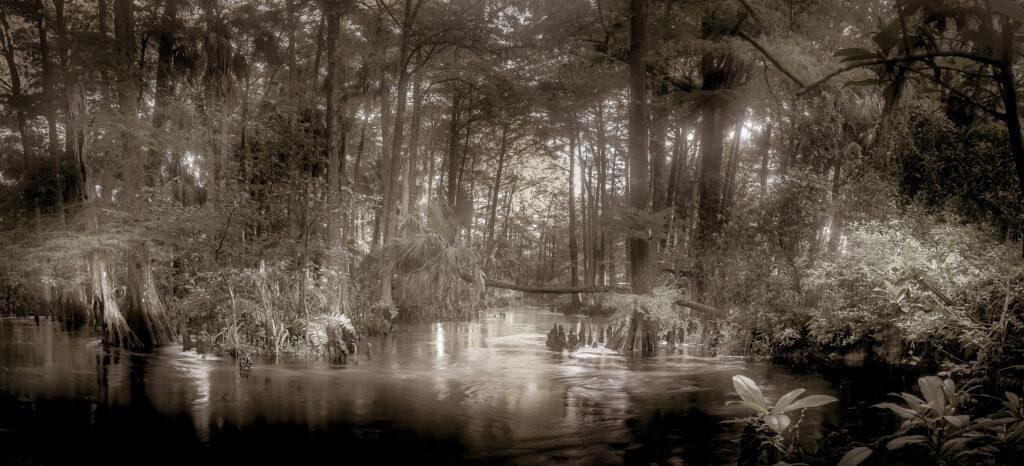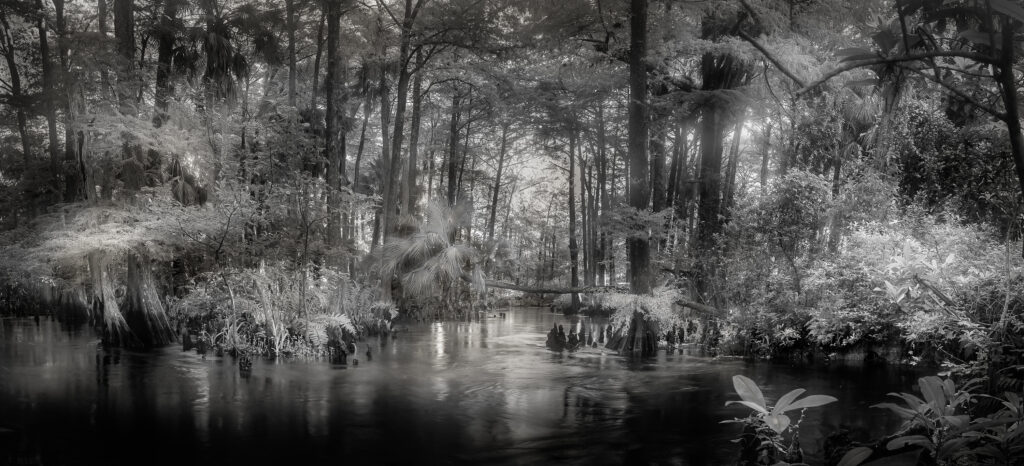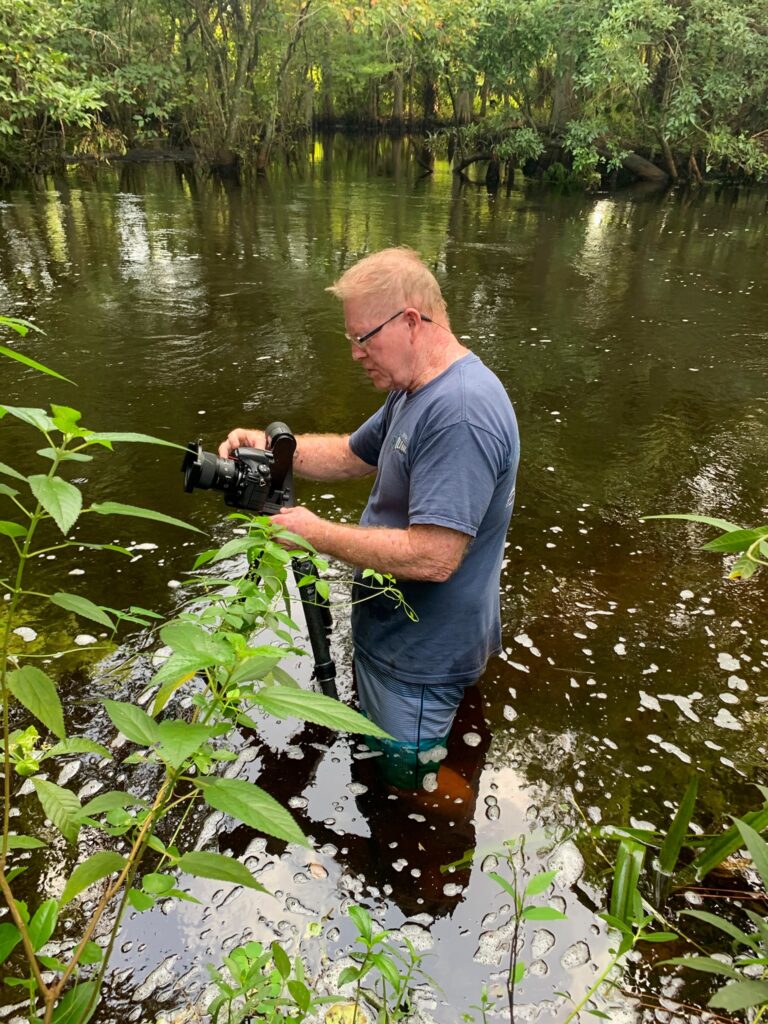
Summer South Florida mornings are rainforest hot and humid. By eight am, the rays of sunlight are bisecting the mist between the towering Cypress trees that canopy the upper Loxahatchee River.
A month of daily tropical rain has filled the watershed marshes between Lake Okeechobee and Palm Beach Counties’ coastal civilization of homes and golf courses. Puddles, lakes and rivulets have merged,converged and flowed seaward to create this watercourse of bubbling and churning freshwater pouring over Cypress knees, fallen logs and a forest of ferns, palms and air plants.

Thousands of boaters ply the waters of the lower Loxahatchee River near the Jupiter Inlet and its familiar Lighthouse, but only a fraction of locals and visitors paddle a kayak or canoe to see the region’s grandest natural attraction. The upper Loxahatchee is a hidden gem of a place. A wild paradise hidden in plain site of major highways lined with restaurants and shopping centers. You can drive Indiantown Road for decades and never know that it exists. Most never do, and fewer yet, actually choose to paddle it. Its not an entirely safe and easy trip. Alligators, snakes, mosquitos nest along its mucky banks. Decaying logs and branches provide unseen hazards beneath the dark foaming waters. Canoe paddlers must portage around two small spillways. And, from launch to pull out, the run totals half a day of strenuous maneuvering in dehydrating heat.

(At this point in the story I would be remiss to continue inferring that I took on this adventure alone and unafraid. The truth is, it took a lot of prodding by my photography pal, Keddy Bostic, whose job was logistical support, and monitoring reptile activity.)
“You get in the water, and I will keep the gators off with this paddle,” he said from the safety of

the oversized kayak”
This was our third attempt to find a great scene and make a picture. Attempt number one was on mountain bikes. With our gear stowed in backpacks we peddled an overgrown trail and learned that photogenic areas of the river are inaccessible by land. For attempt number two, we waited until the Canoe concession opened at nine. We paddled found an awesome photo location, but, arrived too late in the morning when the light was harsh. For the third and final try, we hauled a kayak and a stand-up paddle board off our cars at first light. I secured a waterproof camera case across the deck of the paddle board–after adding bungee holds with resin and fiberglass. Keddy carried the tripod in the kayak.

The camera case was stuffed with microfiber towels that would be used between shots to wipe condensation from the lens. Once the tripod was leveled, five shots were taken panning from left to right. This first row of images focused on the water and stitched together to become a long horizontal panorama. A second row of images captured the forest in a similar panorama. Of course, half way through shooting the 30 second exposures, we heard a giant “plop” into the water from the other bank and saw a small wake pass in the river–which I told myself, was likely a turtle. We returned safely and then over the next few days, I edited the images. L Lightroom handled the horizontal panoramas. I then used Photoshop to join the upper and lower “row” to create what I guess could be called a “vertorama”–a mosaic of ten images that when viewed helps convey the feeling we experienced of being immersed in this “Cathedral of wilderness.


